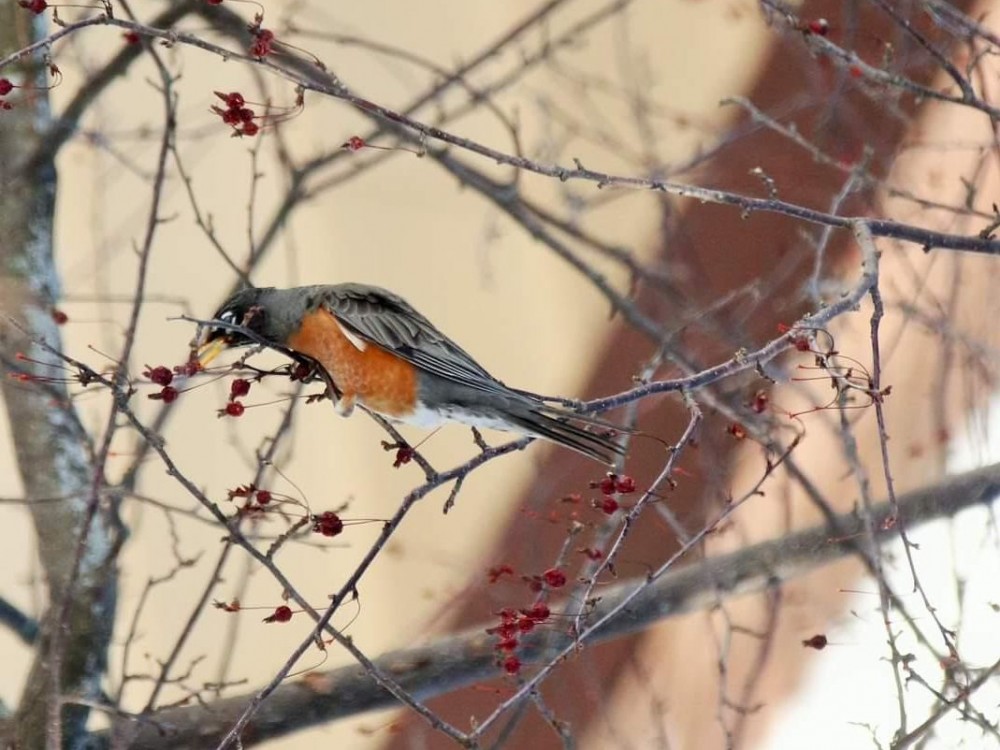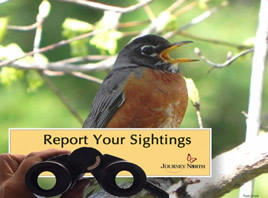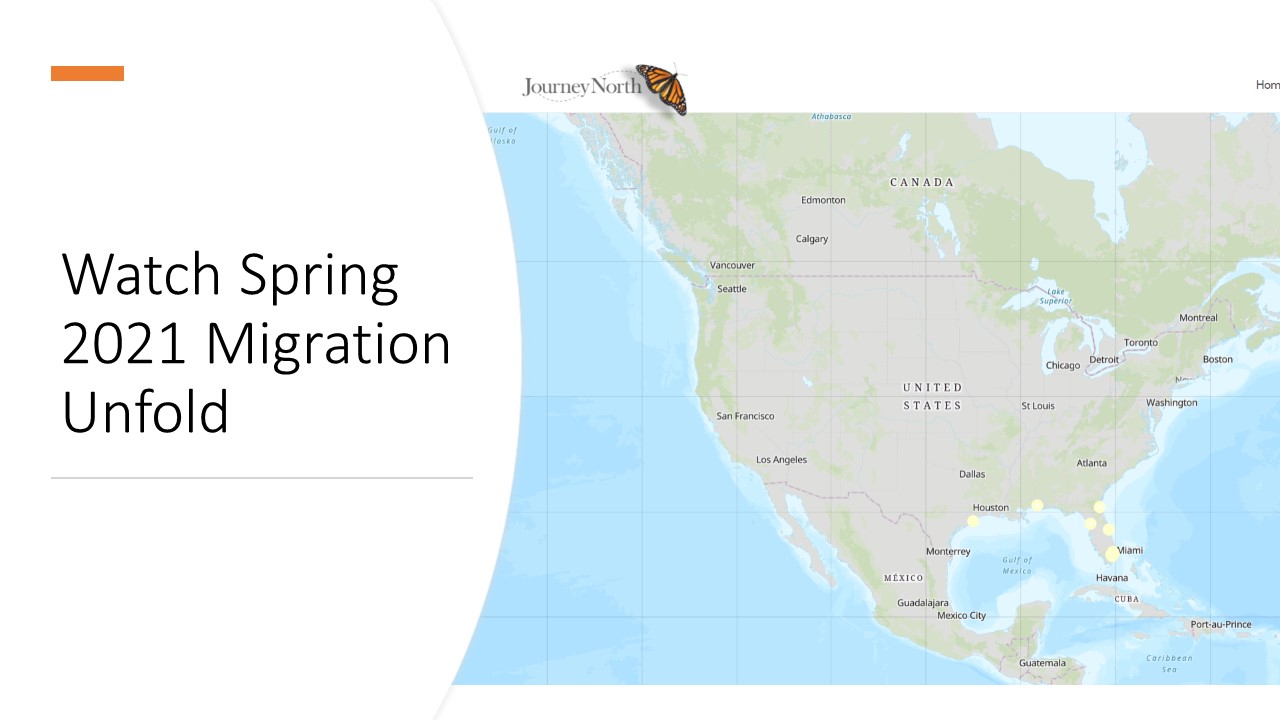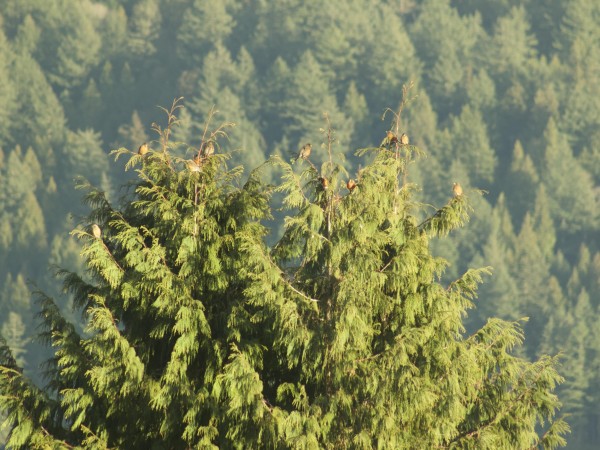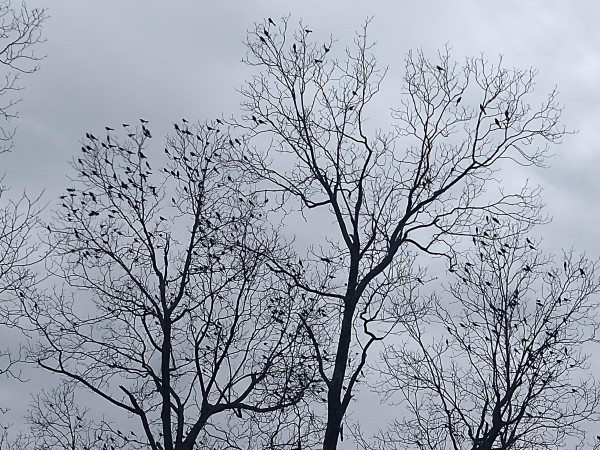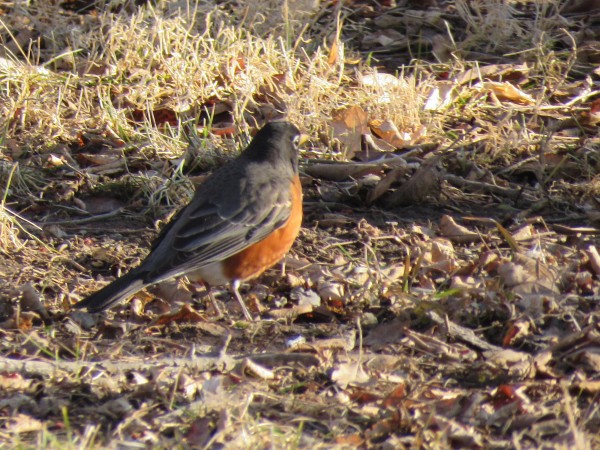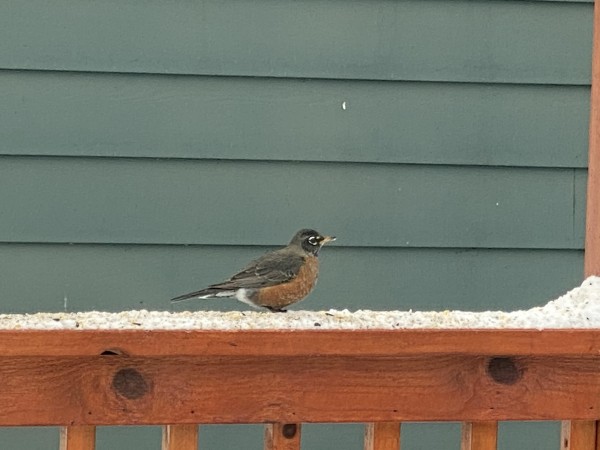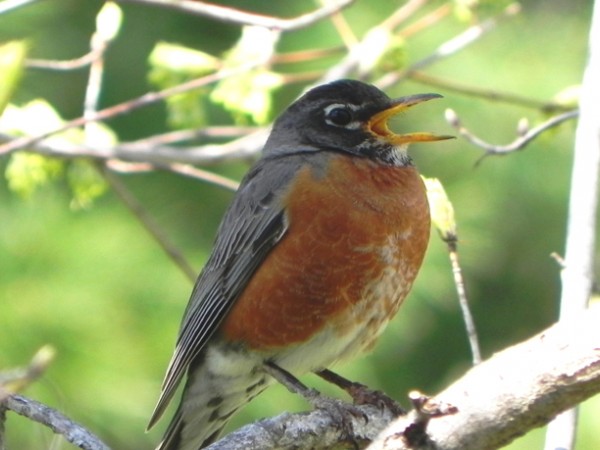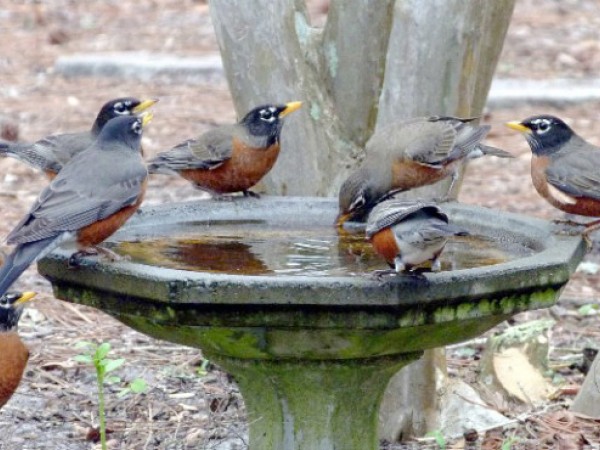Harbingers of Spring
March is the peak month for American Robin migration. Increasing day length triggers their internal clock and urges them to head north with the breeding season fast approaching. Remember to report your observations to Journey North.
A Flurry of Activity
Across North America, Journey North citizen scientists are observing an influx of American Robins as they start to move north and settle into breeding grounds. As the days get longer and snow cover melts away, watch for American Robins to diversify their diet and look for protein-rich food sources such as earthworms.
Patrick in Gibsons, BC: "At least 30 flocking in trees." (02/21/2021)
Allie in Seaboard, NC: "Our entire block is swarming with robins. We could hear them from inside. They are super loud. We walked outside and they are literally covering every large tree in site! Stunning!" (02/26/2021)
Bud in Oakland, IA: "This is the first robin sighting for Spring 2021 at my house." (03/04/2021)
More reports are coming in as far north as Alaska. But are these American Robins overwintering or early migratory arrivals?
Diane in Anchorage, AK: "First time I've ever seen a robin this early in our neighborhood. Friends tell me there are some that overwinter here." (03/02/2021)
Spring Migration: What to Report
A note about reporting wave observations: A wave is three or more American Robins. If your first observation of the season is three or more individuals, please report under Robin (WAVE seen); if your first observation is one or two individuals, please report under Robin (First SEEN).
Reports should always include an estimate of how many Americans Robins you observed. Photos are helpful as you can use them to count. It is hard to count birds – we are not asking for an official number, just an estimate.
Journey North American Robin reporting categories review:
- First Robin: Report the first American Robin you observe. These observations reveal the leading edge of the migration. Report under the category: Robin (First SEEN)
- Waves of Robins: A wave is three or more robins. Report under the category: Robin (WAVE seen)
- First Singing Robin: Report the first robin you hear singing. Male robins sing when they arrive to their breeding territory. Report under the category: Robin (First HEARD singing)
- Nesting Behaviors: Watch for signs such as the male or female flying with nest materials, or the female with mud on breast. Both gather nest materials but usually only the female builds. Report under the category: Robin (Nesting Behavior)
- Other Observations: Report observations such as courtship and territorial behavior. Report under the category: Robin (OTHER Observations)
Territorial Song
Male American Robins arrive first on breeding grounds and begin to mark their territory by singing. With spring just a few weeks away, get ready to listen for their territorial song (also known as the "True Song"). Tracking the first songs of males is a reliable way to predict when the wave of spring migration reaches you.
- Watch for a clear south to north progression on the Robin (First HEARD singing) map.
- Learn to distinguish the True Song from other common vocalizations. Note that some robins may produce the first songs on their wintering grounds, but the vast majority wait until they are on breeding and nesting grounds.

